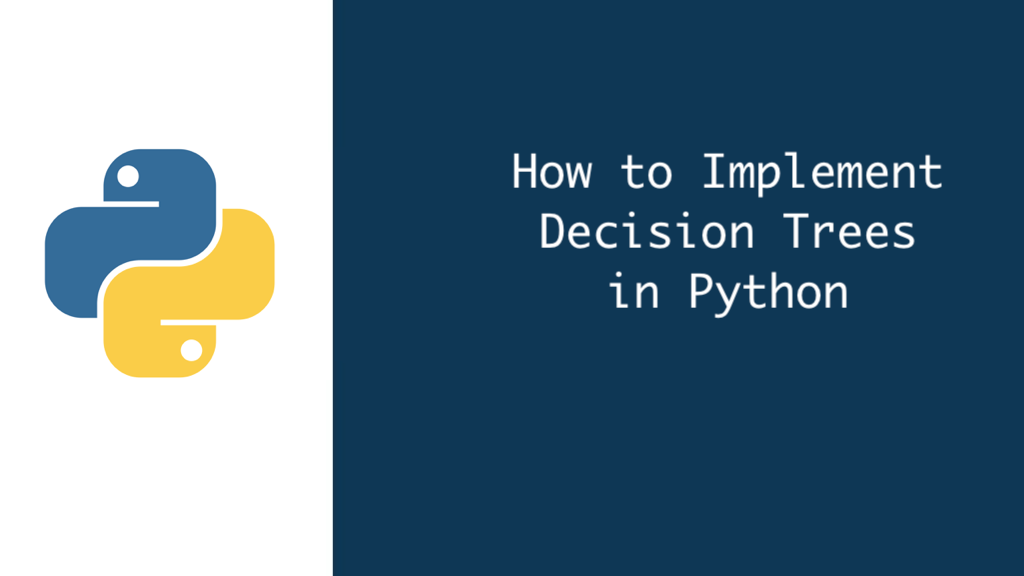Decision trees are a cornerstone of machine learning, offering a powerful and interpretable approach to classification tasks. They work by building a tree-like structure where each node represents a decision point based on a feature of the data, and each branch leads to a possible outcome. Python, with its rich ecosystem of libraries, makes implementing decision trees a breeze. This article equips you with the knowledge and code examples to harness the power of decision trees in your Python projects.
Understanding the Decision Tree Workflow
A decision tree is built through a recursive process that splits the data into increasingly homogeneous subsets based on the most informative features. Here’s a breakdown of the key steps:
- Start with the entire dataset: This represents the root node of the tree.
- Choose the best splitting feature: The algorithm evaluates each feature in the data and identifies the one that best separates the data points into distinct classes. This selection is often based on metrics like information gain or Gini impurity, which measure the reduction in uncertainty after a split.
- Create child nodes: Based on the chosen feature and its possible values, the data is split into subsets, forming child nodes of the current node.
- Repeat for each child node: The process of selecting the best splitting feature and creating child nodes is recursively applied to each child node until a stopping criterion is met. This criterion could be reaching a certain level of purity (all data points in a node belong to the same class) or exceeding a maximum depth for the tree.
- Assign class labels to terminal nodes: The final nodes, call terminal nodes or leaves, are label with the most frequent class present in the corresponding data subset.
Building Decision Trees in Python: Leveraging scikit-learn
Scikit-learn, a popular Python library for machine learning, provides a user-friendly implementation of decision trees through the DecisionTreeClassifier class. Here’s a step-by-step guide to building a decision tree in Python:
- Import necessary libraries:
from sklearn.datasets import load_iris
from sklearn.tree import DecisionTreeClassifier- Load a dataset: For demonstration purposes, let’s use the Iris dataset, a classic example for classification tasks.
iris = load_iris()
X = iris.data # Features
y = iris.target # Target variable (class labels)- Instantiate the DecisionTreeClassifier:
# Create a decision tree classifier with default parameters
clf = DecisionTreeClassifier()- Train the model: This involves fitting the decision tree to the training data.
clf.fit(X, y)- Make predictions: Once trained, you can use the model to predict the class labels for new data points.
# Predict the class labels for new data samples (X_new)
predictions = clf.predict(X_new)Enhancing Your Decision Tree: Customization and Evaluation
Scikit-learn’s DecisionTreeClassifier offers various parameters to customize the tree’s behavior. Here are some key parameters to consider:
- criterion: This specifies the function used to measure the quality of a split. (e.g., “gini” for Gini impurity, “entropy” for information gain).
- max_depth: This sets the maximum depth of the tree, preventing overfitting.
- min_samples_split: This defines the minimum number of data points required to split a node, avoiding overfitting on small datasets.
Evaluating the performance of your decision tree is crucial. Metrics like accuracy, precision, recall, and F1-score can be use to assess how well the model generalizes to unseen data.
Code Example: Building a Decision Tree with Hyperparameter Tuning
from sklearn.model_selection import GridSearchCV
# Define a parameter grid for hyperparameter tuning
param_grid = {
"criterion": ["gini", "entropy"],
"max_depth": [2, 4, 6],
"min_samples_split": [2, 5, 10],
}
# Create a GridSearchCV object to find the best hyperparameter combination
grid_search = GridSearchCV(clf, param_grid, scoring="accuracy")
# Fit the grid search to the training data
grid_search.fit(X, y)
# Print the best parameters and score
print("Best parameters:", grid_search.best_params_)
print("Best score:", grid_search.best_score_)Advantages and Considerations for Decision Trees
Decision trees offer several advantages, including their advantages, including their interpretability – you can easily trace a decision path through the tree to understand why a specific prediction was made. Additionally, they can handle both categorical and numerical features without extensive data preprocessing. However, decision trees are also susceptible to overfitting if not carefully tuned.
Advanced Techniques
Ensemble Methods: Combining multiple decision trees using techniques like random forests or bagging can improve accuracy and reduce overfitting.
Feature Importance: Decision trees provide insights into feature importance, revealing which features contribute most to the splitting decisions.
Pruning: Techniques like cost-complexity pruning can be used to remove unnecessary branches from the tree, preventing overfitting.
The Future of Decision Trees in Python
Decision trees remain a fundamental tool in the machine learning landscape. As Python libraries like scikit-learn continue to evolve, we can expect advancements in:
- Explainability: Enhanced techniques to explain not only individual predictions but also the overall decision-making process of the tree.
- Scalability: Optimizations to handle even larger and more complex datasets.
- Integration with Deep Learning: Hybrid approaches combining decision trees with deep learning models for improved performance on specific tasks.
In Conclusion: Decision Trees – A Powerful Tool in Your Python Arsenal
Decision trees, implemented with Python’s scikit-learn library, provide a robust and interpretable approach to classification tasks. By understanding the core concepts, leveraging customization options, and exploring advanced techniques, you can harness the power of decision trees to extract valuable insights from your data and make informed decisions. Remember, decision trees are just one piece of the machine learning puzzle. As you progress on your data science journey, explore other algorithms and ensemble methods to find the best fit for your specific problem.
